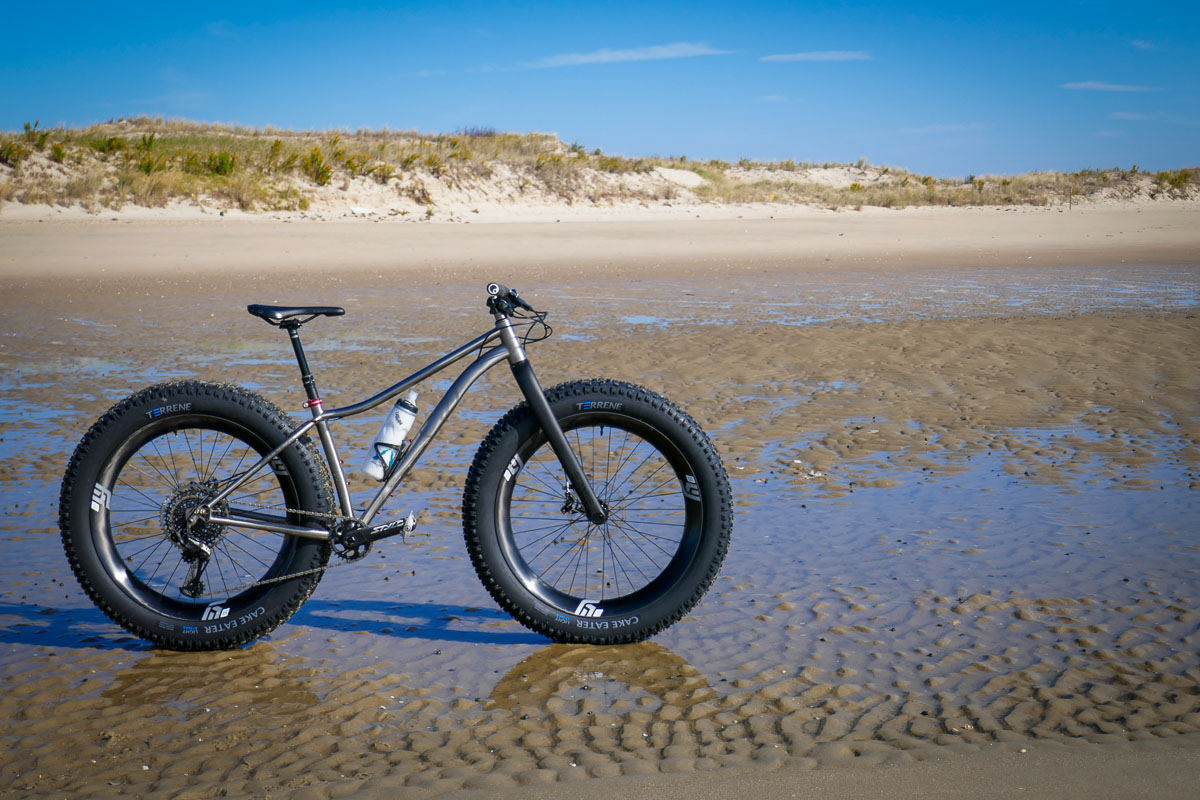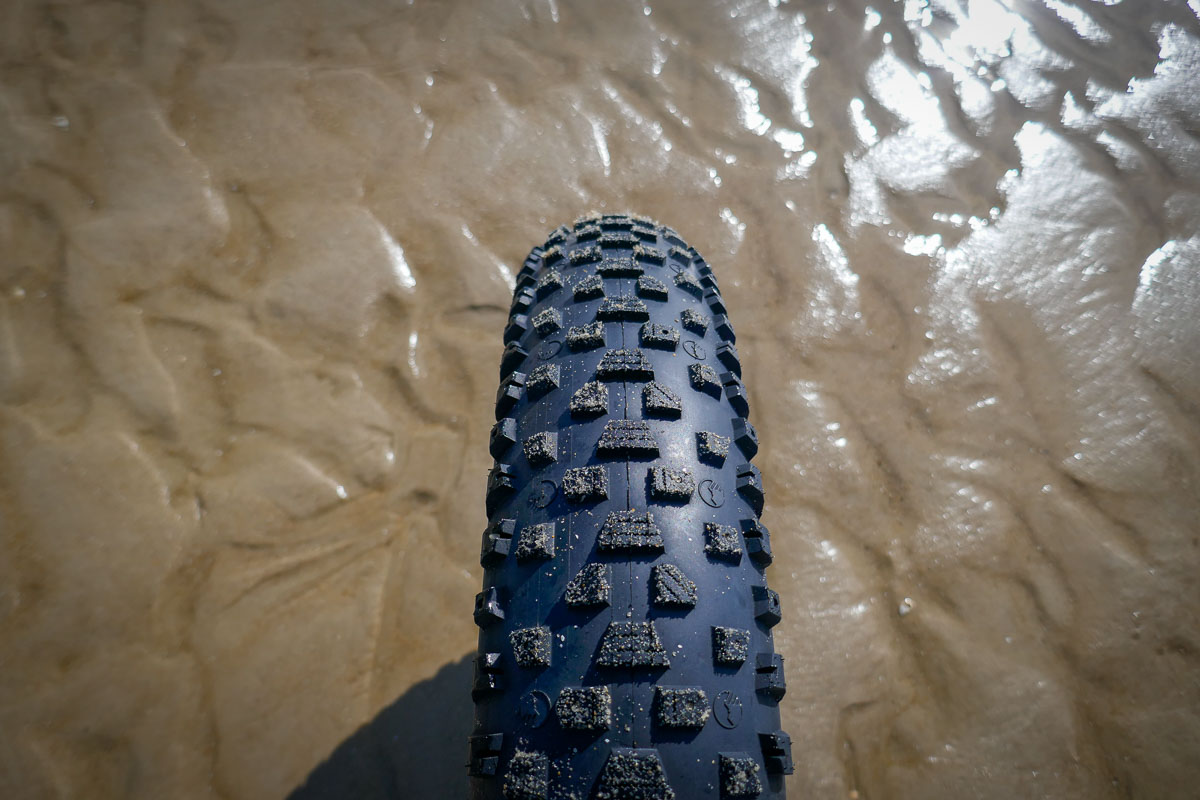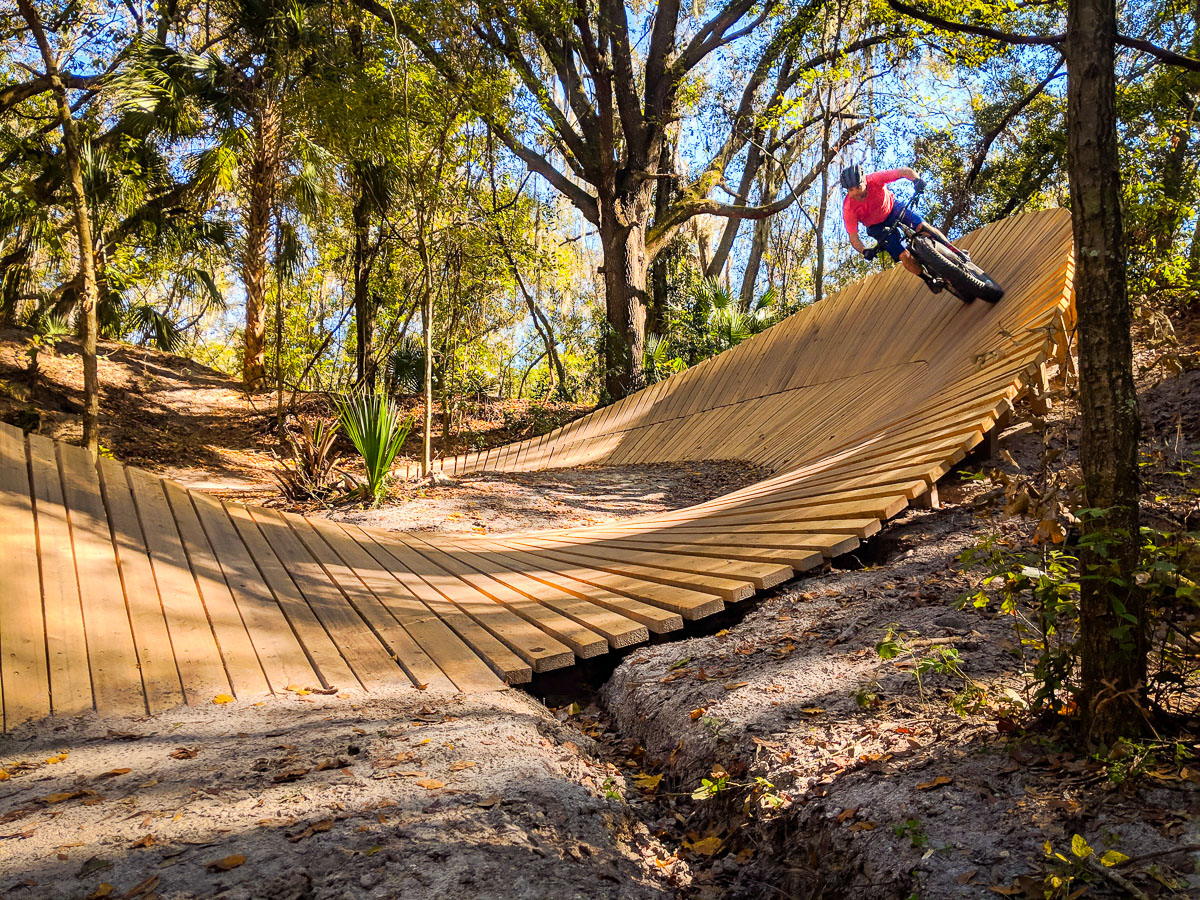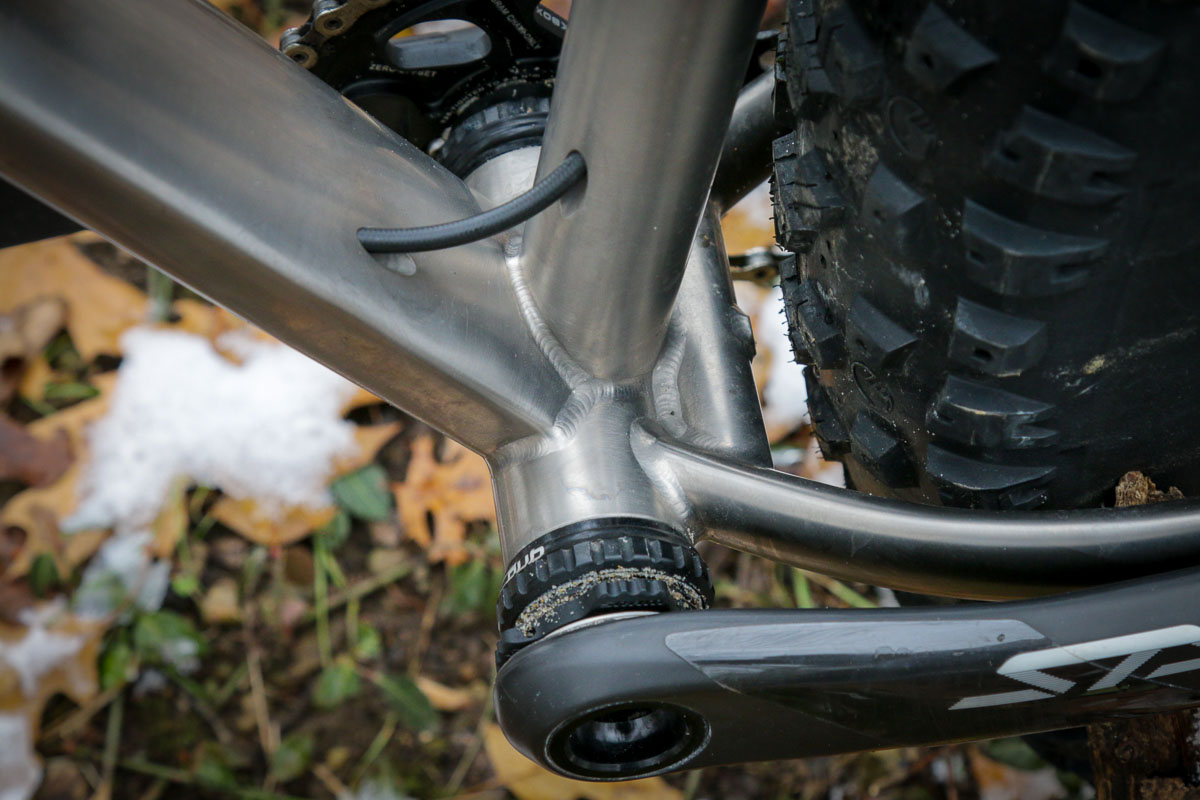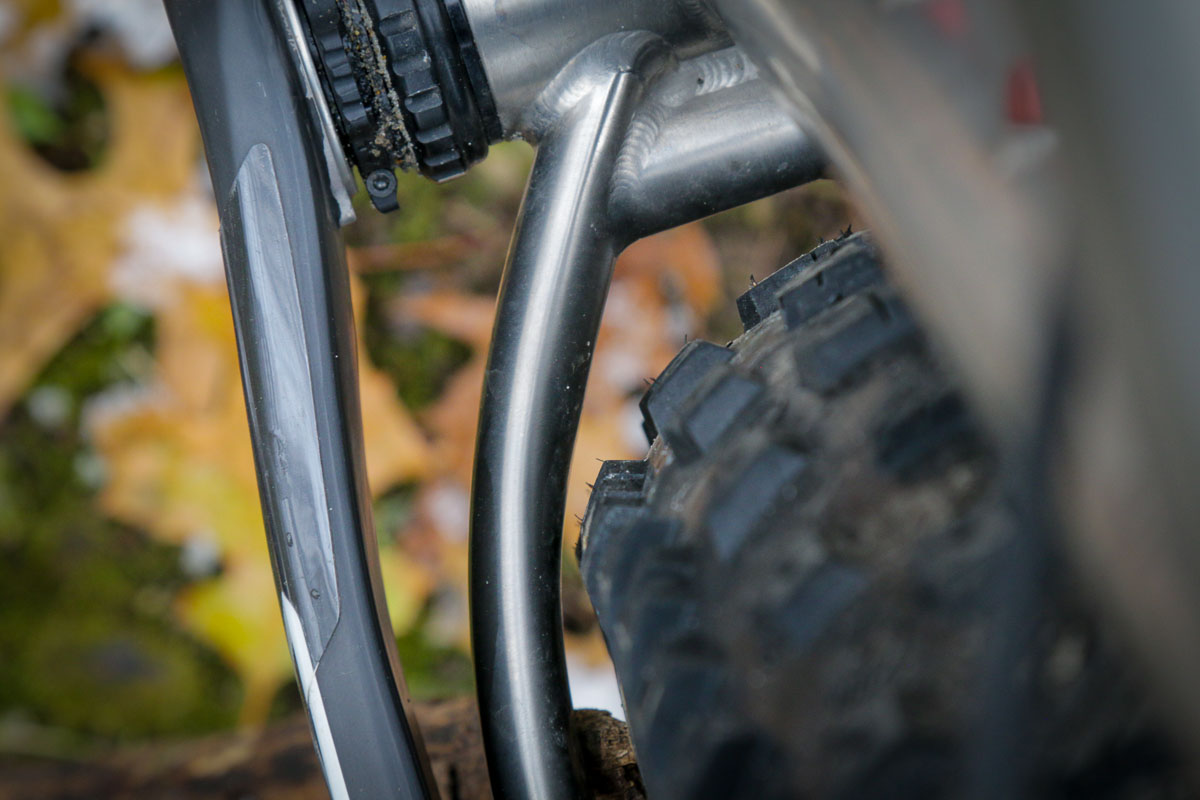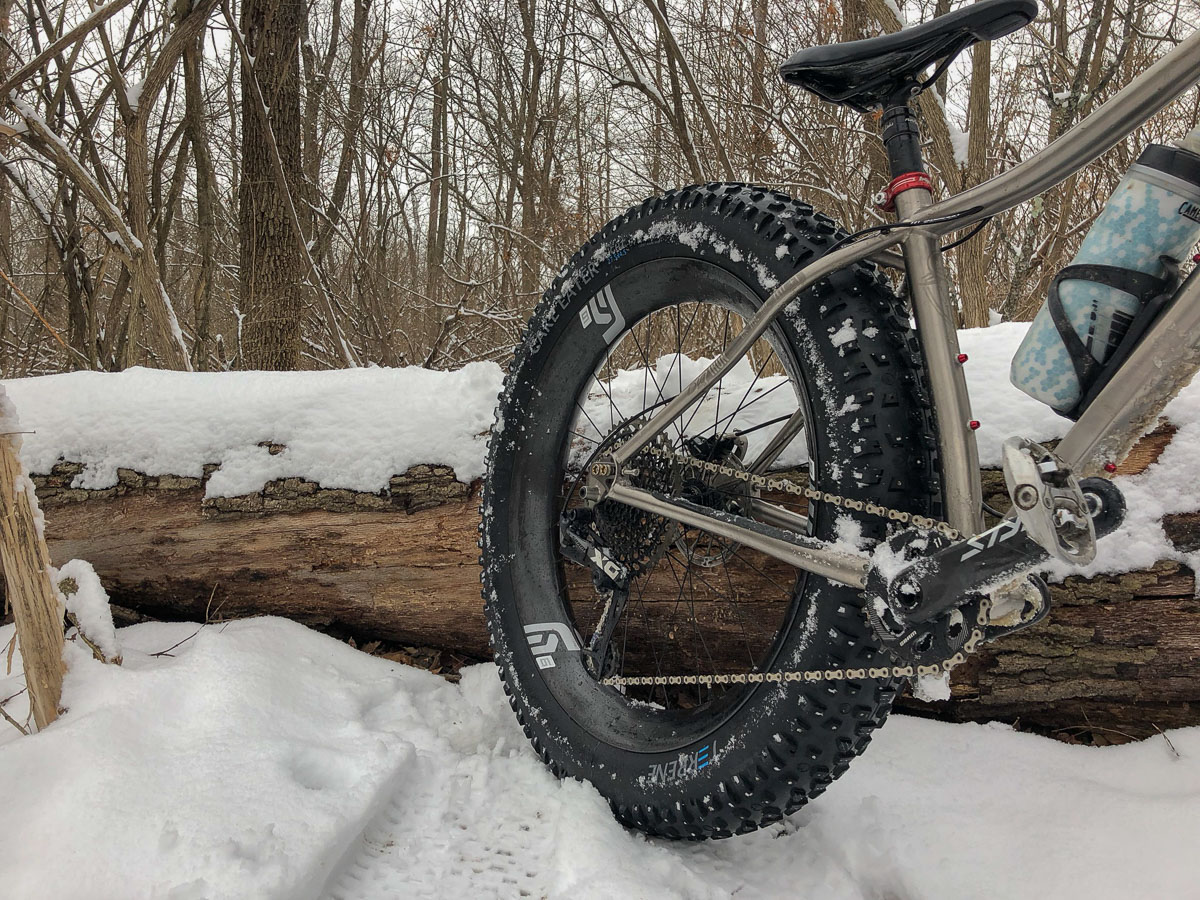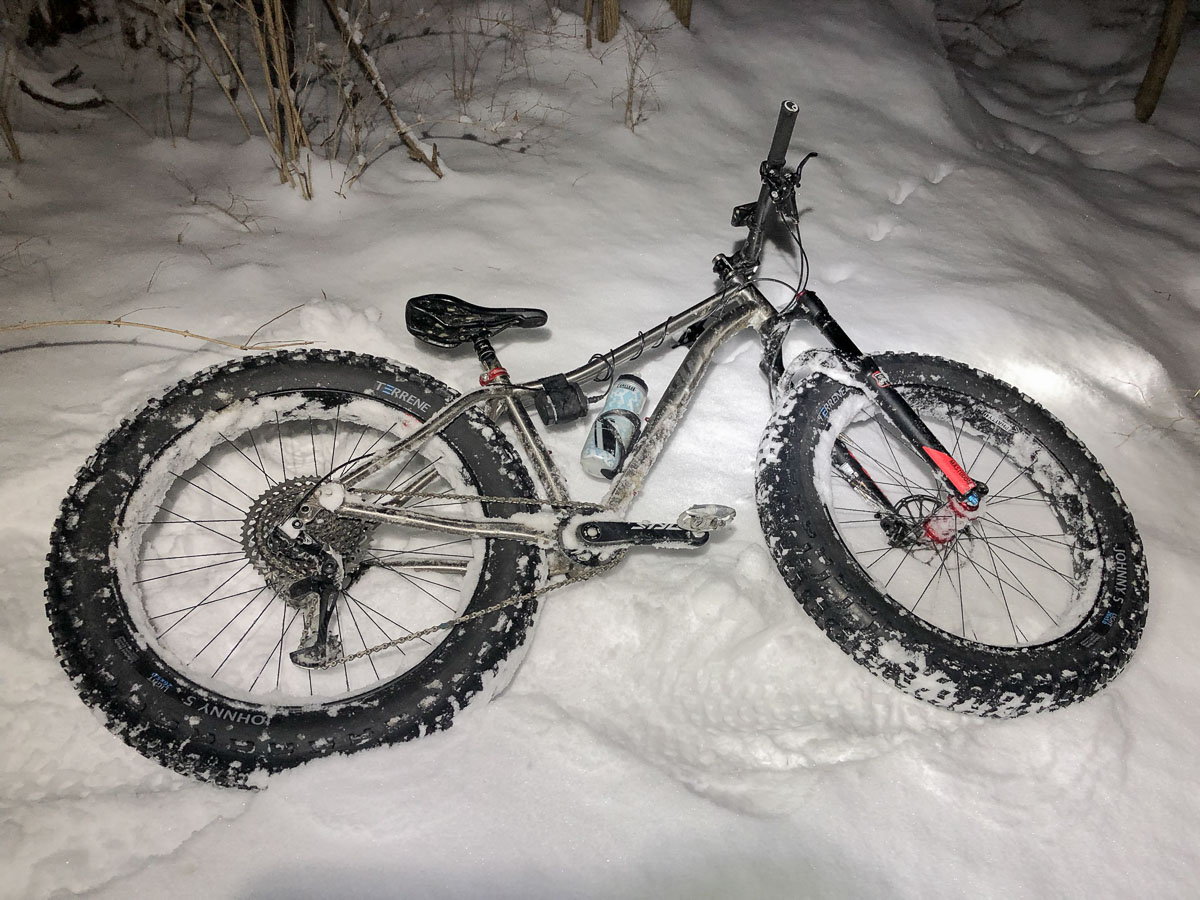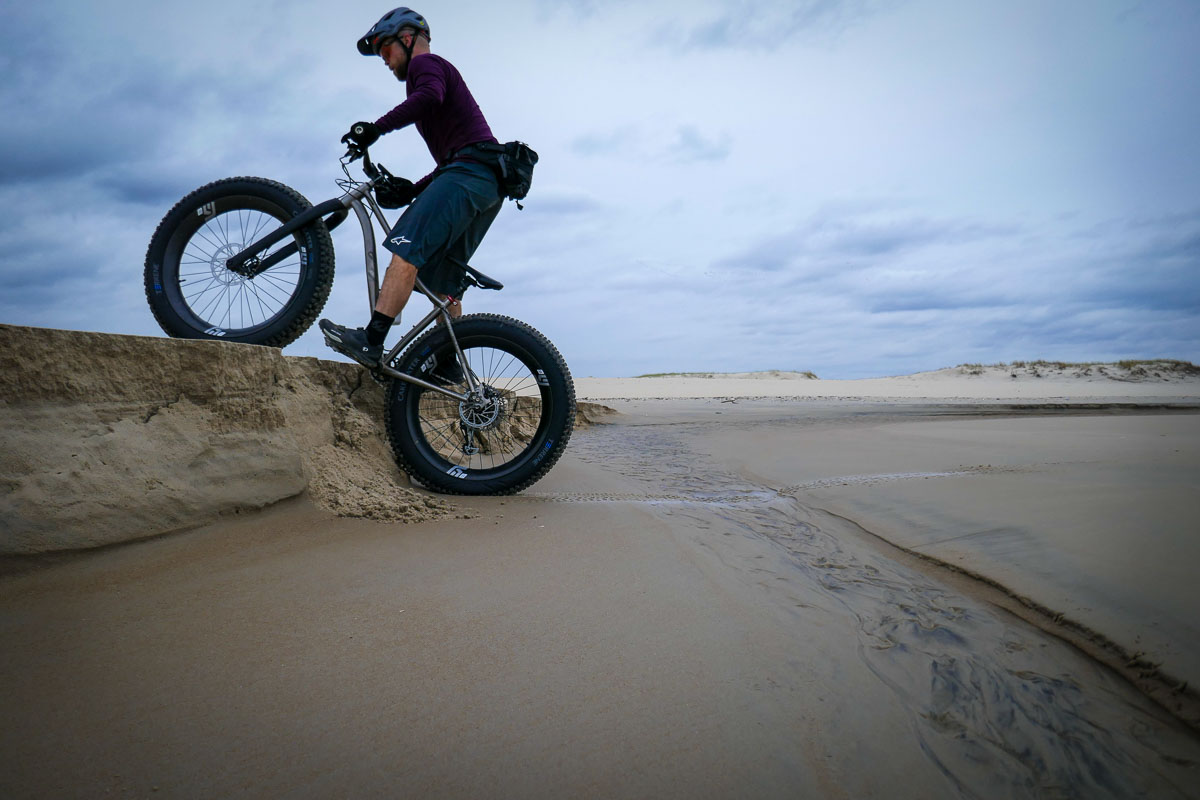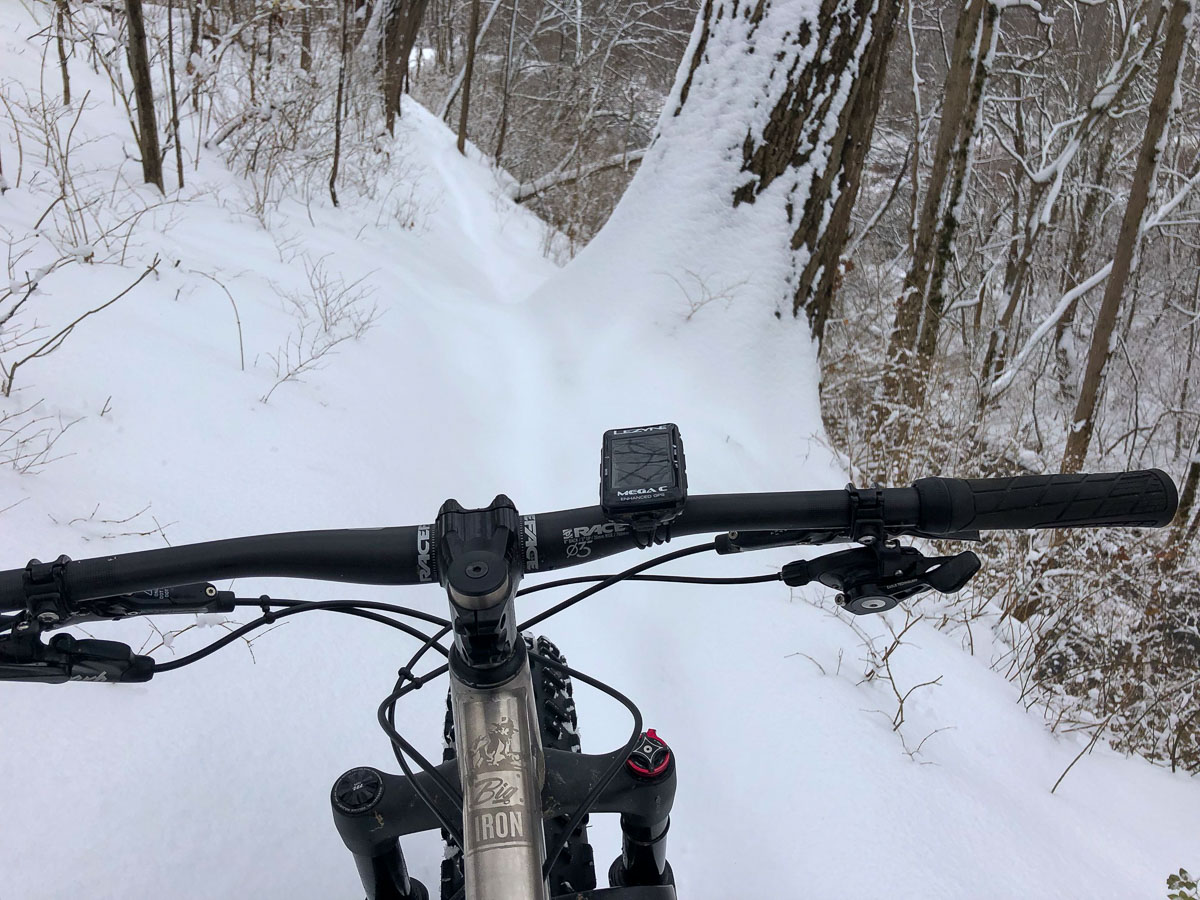By now, you’ve probably seen the news that Adam Miller has started another bike company with his friends, Revel Bikes. But while the Revel team was focused on getting the new bikes across the finish line, I was riding another one of their products – the Why Cycles Big Iron. And it is big. Remember when tire companies were just starting to introduce 5″ tires and everyone was like, that’s great, but what bike will fit them? This one can.
We have the biggest tires
In fact, it will fit up to a 27.5 x 4.5 as well as a 26 x 5″ with plenty of room to spare. That makes the Big Iron the biggest fat bike I’ve ever tested in terms of pure tire clearance. As usual, there’s both a plus and a minus side to that. On the plus side, you’re certainly not limited in terms of your tire choice. Really, the only concern when building out your Big Iron is that you don’t go too small with the tires which would drop the bottom bracket too low. In this case, I would safely recommend any 27.5″ fat bike set up, or the larger 26″ tires, say 4.6″ and above.
These days, even that’s hard to dial in since tires like the new 45NRTH 27.5″ have a much taller sidewall than other 27.5″ tires of the same size, so even if they’re marked the same width, the actual ride height may still vary between two different tires. But directly from Why, you can buy the Big Iron set up with 27.5 x 4 or 27.5 x 4.5″ tires – the 4.0″ is an option on the XX1 ENVE kit, otherwise, the stock tire is the 27.5 x 4.5″ Terrene Cake Eater Lite.
For most of the review, that’s how I rode the Big Iron – set up with the new ENVE M685 carbon fat bike wheels and Terrene Cake Eater Lite 27.5 x 4.5″ tires. As I pointed out in the first look, this isn’t a 27.5″ tire that claims to be a certain width and actually measures much smaller. Terrene’s fat bike tires have consistently measured very close to their true size. These actually measured slightly wider than claimed with a 4.635″ width. It’s also a very tall tire, measuring close to 20mm taller than the 26 x 5″ set up.
Big wheels keep on rollin’
Even with carbon rims, a 27.5 x 4.5″ fat bike tire with enough sealant in it is a lot of weight to be pushing around. Sure, the combination builds up insane momentum once you get it rolling, but you have to get it there first (and slow it down). Nowhere was this more noticeable than when I was riding the Big Iron like a mountain bike down at Alafia River State Park and Balm Boyette Park in Florida. Michael and I were down there for the Roads, Rocks, and Reggae 2 gravel ride, but we also brought our fat bikes to do some riding on the beaches. But when Wayne Lee invited us to sample some of the local single track, we couldn’t resist.
Like most of the trails I’ve ridden in Florida, they actually turned out to be really good. And in spite of Wayne saying he “didn’t know people could ride fat bikes like that,” secretly, I was having to really work to keep the huge wheel and tire package moving. Even though I was working hard, I was having a blast which is probably thanks in part to the adjustable dropouts which allow you to slam the rear wheel as far forward as the tires allow. Which means you’re basically sitting on the rear tire. This yields a snappy ride that should not be possible on something with tires this big.
Then there’s the Q-factor. There’s no getting around that here. With clearance for tires this big, you have to use a wide Q-factor crank – though it seemed like the Truvativ Stylo Dub Fat 5 cranks are wider than they need to be.
Pedaling around all day with one of the widest Q-factors available is certainly something you need to consider before buying one of these bikes. Larger riders probably won’t have as much issue, but for me it made me miss the narrow Q-factor of the Otso Voytek – or even the Q-Factor of Fat 4 cranks. It’s one of those things you’ll adapt to, but if you switching back and forth between say a fat bike and gravel bike, it’s harder to ignore.
However, I do need to give Why credit for their shaping of the seat stays. On many of these fat bike built around the larger tire sizes, the seat stays will actually rub on the inside of my knees. Why did a great job of keeping them mostly out of the way – the only time I noticed any contact was when I was really moving on the bike and hanging off the back.
But back to the positive side, there were also major benefits to the bigger wheels and tires. Similar to a 29er, the larger diameters roll over everything and seemed to help with trail obstacles – like when you have to hop large trees in the snow. I was a little unsure of the move when I rolled up to the tree above, but it was almost comical how easily the Big Iron got over it.
At the slower speeds typically associated with plodding along in the snow, the added heft to the wheels wasn’t as noticeable during the ride since you aren’t rapidly changing speeds. But there is no denying the fact that you were pushing heavier wheels at the end of the ride.
27.5 or 26″?
The experience with the 27.5″ wheels and tires made me want to try the same bike but with 26″, so I swapped out the ENVEs for a pair of Atomik Carbon Phatty 85s wrapped in 26 x 5″ Terrene Johnny 5s. I was surprised to find that this set up was actually slightly heavier due to the Johnny 5s which weigh 1788g (Cake Eater 4.5s are 1599g) and the fact that the Atomik wheels are built to Onyx hubs where the ENVEs were built to Industry Nine Torches. But even with the added weight of the 26″ set up, the bike felt more agile and quicker to accelerate. However, the 27.5″ set up did feel faster overall.
The Johnny 5s are wider than the Cake Eater Lites, but unlike the Cake Eaters, the Johnny 5s measure undersize at 4.788″. Due to the intended use of the tire, I’m assuming these are meant to be used on a 100mm rim which would probably get them to a full 5″.
About that weight – with the rigid ENVE fat fork, ENVE Carbon 685 wheels and 27.5 x 4.5″ Terrene Cake Eater Light tires, this bike checks in right at 29lbs. To add a suspension fork that will clear those tires, you’re looking at another 3.2lbs to add a Manitou Mastodon pro for a total of 32.2lbs. The 26 x 5″ build crept up past 33lbs. Granted this bike has a dropper post, big brakes, wide bars, and a burly build, but a light weight fat bike it is not.
Ride it all
So where am I going with all of this? In spite of the attention grabbing pontoon floats masquerading as fat bike tires, the team at Why did an incredible job to build a bike around them that didn’t ride like that pontoon boat. Somehow, the Big Iron manages to be an absolute fun machine in whatever situation you put it in. Want to wheelie around the parking lot all day? It’s exceptional at it. Want to shred mountain bike trails like any other hard tail (with a bit more effort)? Yup, it’s great at that too. Skinnies in the snow? This thing probably makes you a little too confident.
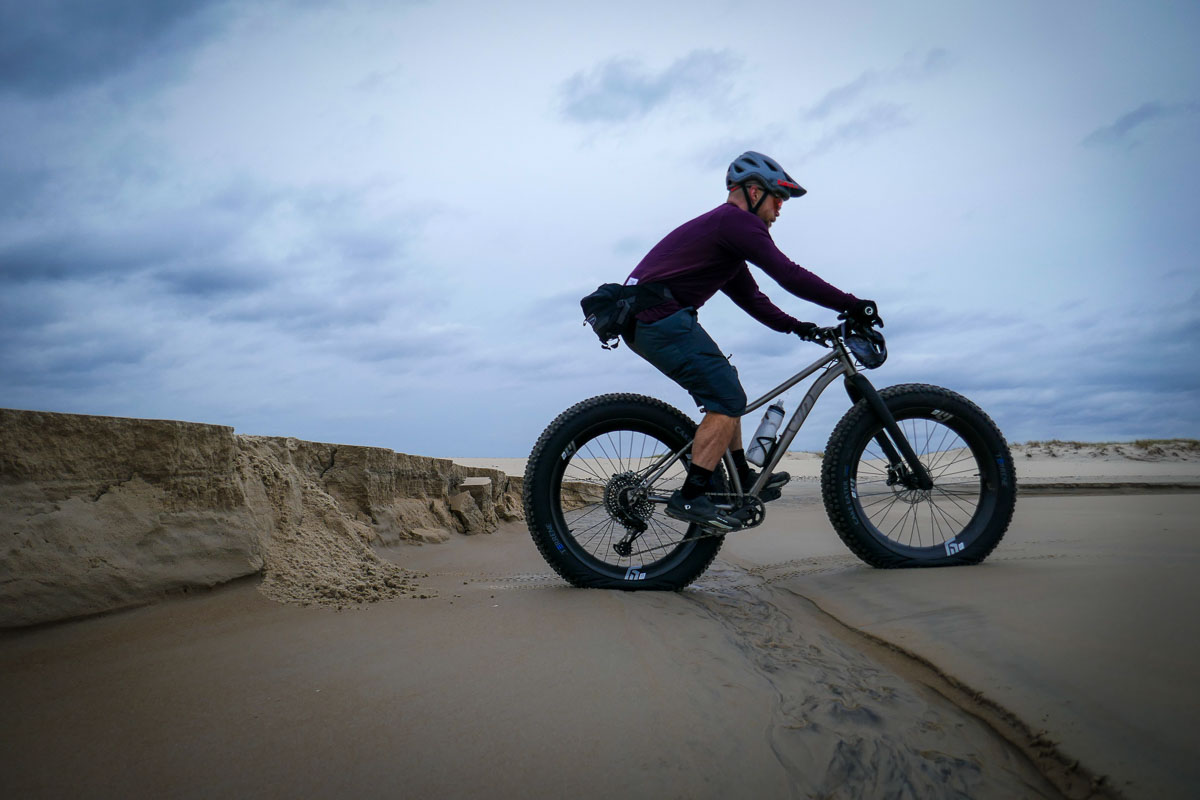
But while the Big Iron is just as capable as any trail fat bike, I think it would also be excellent on expedition type rides where having maximum flotation is a must – as is having a durable frame. This feels like the kind of fat bike you could load up with all your gear and a pack raft and set off down the coast for days (weeks? months?) knowing it’s going to get you to your destination without a hiccup.
At the end of the test period (and likely the end of our snow season), the Big Iron left quite the impression. For most of us, there’s no true need for a fat bike with tires this big, but that doesn’t make it any less fun. Honestly, I’m still on the fence about 27.5″ fat, but then again it took me a long time to adopt to 29″ mountain bike wheels as well.
One thing is certain, if you want the biggest, baddest, most fun titanium fat bike out there, this is it. The geometry is so dialed, and the frame offers just about everything you need out of a ti fat bike. If you’re looking for maximum flotation out of a fat bike that can still shred any trail and you’re not a weight weenie, bust out the Big Iron.
For the full tech breakdown including geometry, check out our first post on the Big Iron here.

